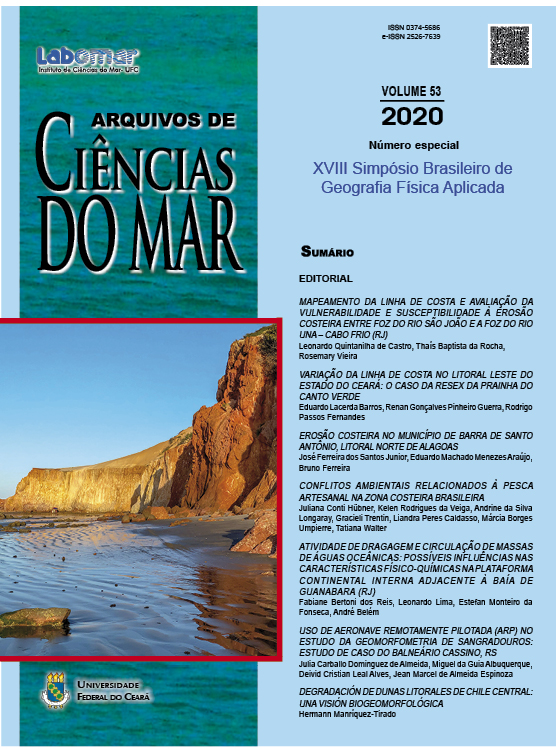The Snow Island coastal ecosystems, Antarctica: physics, chemistry and mineralogy
DOI:
https://doi.org/10.32360/acmar.v53iEspecial.42672Abstract
Most of the Antarctic ice-free areas occur near the coastal zone, places relevant for nutrient transfers by fauna. In this paper, we analyze the Snow Island coastal ecosystems, Antarctica, from their physical, chemical and mineralogical properties. Five samples were collected from the marine terraces. Exchangeable nutrients, pH and texture were determined. Al, Ca, Fe, K, Mg, Na, Si, Co, Cu, Mn, P, Pb and Zr were determined by EDX. The mineralogy was determined by X-ray diffraction (DRX). These coastal ecosystems are predominantly sandy, acidic and dystrophic. Nutrient transfers are essential for fertilization of these environments. Biovectors, such birds, transport nutrients from sea to land, identified by the high values of P and organic carbon. There were signs of cryoclastic weathering and chemical alterations with the occurrence of smectite, kaolinite and goethite. Monitoring of Antarctic coastal ecosystems it is important to try to identify and understand the impacts of climate change.
Keywords: cryoclastic, phosphatization, fauna, nutrient cycling, marine terraces.
Downloads
Downloads
Published
How to Cite
Issue
Section
License
1. Proposta de Política para Periódicos de Acesso Livre
Autores que publicam nesta revista concordam com os seguintes termos:
- Autores mantém os direitos autorais e concedem à revista o direito de primeira publicação, com o trabalho simultaneamente licenciado sob a Licença Creative Commons Attribution que permite o compartilhamento do trabalho com reconhecimento da autoria e publicação inicial nesta revista.
- Autores têm autorização para assumir contratos adicionais separadamente, para distribuição não-exclusiva da versão do trabalho publicada nesta revista (ex.: publicar em repositório institucional ou como capítulo de livro), com reconhecimento de autoria e publicação inicial nesta revista.
- Autores têm permissão e são estimulados a publicar e distribuir seu trabalho online (ex.: em repositórios institucionais ou na sua página pessoal) a qualquer ponto antes ou durante o processo editorial, já que isso pode gerar alterações produtivas, bem como aumentar o impacto e a citação do trabalho publicado (Veja O Efeito do Acesso Livre).

